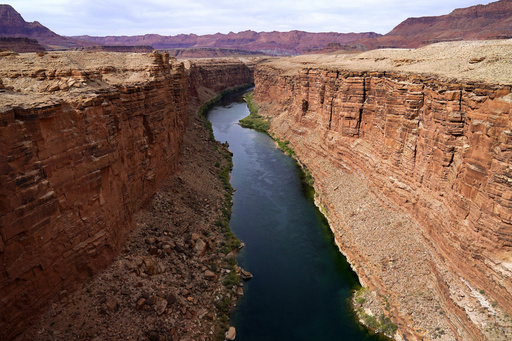The U.S. government has declared that Arizona, Nevada, and Mexico will face continued water cuts from the Colorado River in the upcoming year, maintaining the existing restrictions. The Colorado River, spanning 1,450 miles (2,334 kilometers), is crucial for the Western United States, supplying water to cities, farms in northern Mexico, seven Western states, multiple Native American tribes, and irrigating millions of acres of farmland in the American West. It also generates hydropower for the region.
Due to years of overuse, increasing temperatures, and drought, the Colorado River now has reduced water flows compared to previous decades. The Interior Department forecasts water availability for the following year based on the levels at Lake Mead, one of the primary reservoirs on the river, which serves as an indicator of its condition. Arizona will witness an 18% reduction in its Colorado River allocation, Mexico a 5% decrease, and Nevada, which receives less water than other states, a 7% cut.
These announced cuts fall under the “Tier 1” category, similar to those in effect in the current and previous years, intensifying the river’s crisis. Despite challenges, efforts such as increased rainfall and water-saving initiatives in Arizona, California, and Nevada have slightly improved the short-term outlook for Lake Mead and upstream Lake Powell.
As Lake Mead and Lake Powell currently stand at 37% capacity, ongoing water conservation efforts in Arizona, California, and Nevada, supported by federal funding until 2026, have been praised. Discussions are ongoing among states, tribes, and other stakeholders regarding the river’s water-sharing arrangements post-2026 when existing guidelines expire.
Arizona’s Department of Water Resources Director, Tom Buschatzke, acknowledged the significant conservation efforts in Arizona to safeguard the Colorado River system. He highlighted the likelihood of making tough decisions in the face of future conditions challenging water resources sustainability.


